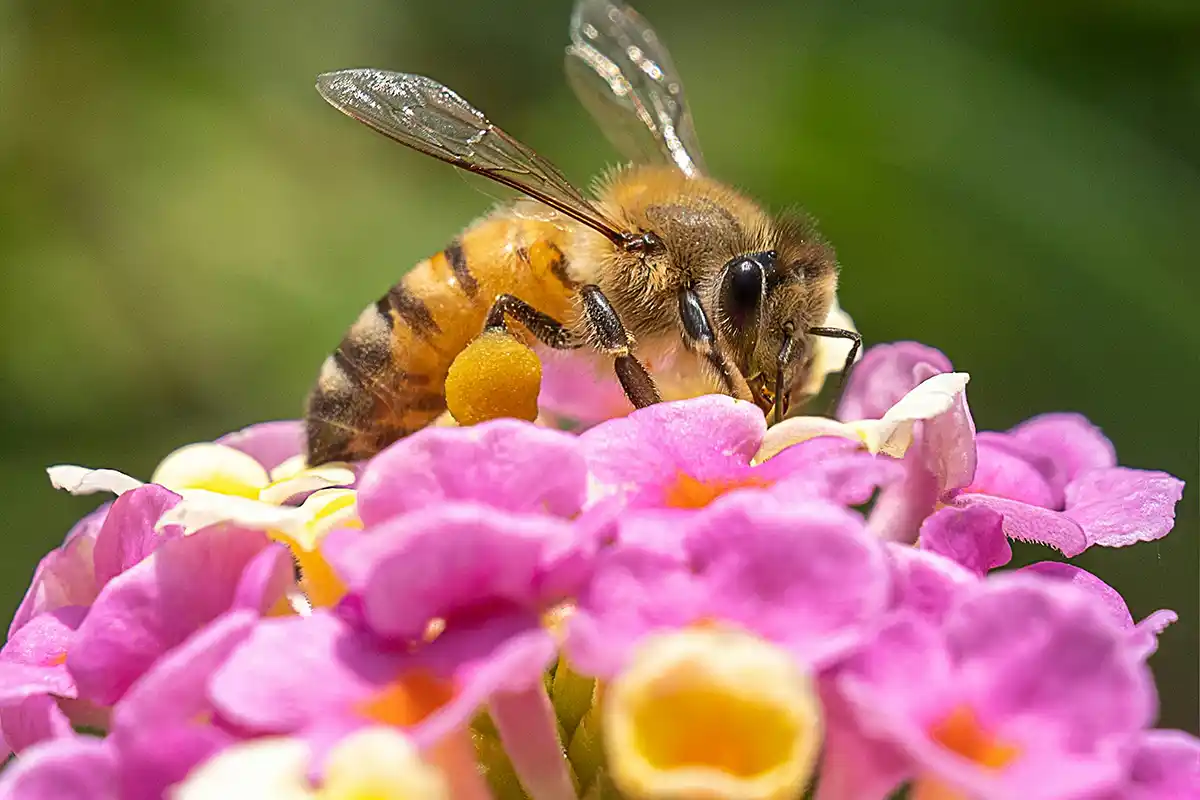
Why Are Honey Bees Attracted to Flowers in My Phoenix, AZ Backyard?
If you live in the Phoenix, Arizona metro area, also known as the Valley of the Sun, you should be familiar with the area’s arid landscapes, dotted with a diverse range of flowers, cacti and other flowering plants. These include poppies, lantanas, sun flowers, marigolds and Saguaro cactus flowers.
As temperatures in the begin to warm, a quiet symphony begins to unfold in many Valley backyards. The gentle hum of honey honey bees fills the air, as these essential pollinators buzz from one flower to another, fastidiously collecting nectar and pollen.
If you’ve ever wondered why these honey honey bees are particularly drawn to the flowers in your Phoenix backyard, you’re not alone. Understanding the intricate relationship between honey bees and flowers not only sheds light on their ecological importance but also enhances our appreciation of the floral diversity that thrives in our region.
The Role of Honey Bees in Pollination
Honey bees are pivotal for pollination, a process that is essential for the reproduction of flowering plants. When a bee visits a flower in search of nectar, it inadvertently collects pollen on its body. As it moves from flower to flower, transferring this pollen, it helps fertilize plants, allowing them to produce fruit and seeds. This natural process is essential not just for the plants themselves, but for ecosystems—and humans—relying on fruits, vegetables, and nuts. In fact, approximately one-third of the food we consume is pollinated by honey bees.
Flower Characteristics That Attract Honey Bees
Colorful Petals
Honey bees are particularly attracted to brightly colored flowers, especially those in shades of blue, purple, yellow, and white. These colors stand out against the backdrop of green foliage and sandy soils found in Phoenix, making it easier for honey bees to recognize and locate food sources.
Fragrant Scents
Many flowers emit sweet yet, distinct, fragrances that entice honey honey bees. This makes for a literal potpourri of aromas wafting through your garden that can prove to be irresistible to honey bees searching for food.
Accessible Nectar
Flower structure plays a crucial role in bee attraction. Bee-friendly flowers typically have a corolla that allows easy access to nectar. Flowers with shallow, tubular shapes permit honey bees to navigate easily, while those with deeper structures may cater to specific species that possess longer tongues.
Pollen Production
Bees are opportunistic feeders, so flowers that produce ample pollen along with abundant nectar are likely to attract them. The availability of food resources can greatly influence bee visitation rates.
Phoenix’s Unique Flora
Living in Phoenix comes with its own set of challenges and opportunities for gardening. The region’s hot and arid climate supports a variety of hardy, drought-tolerant plants that are particularly appealing to honey bees.
Desert Wildflowers
Native species such as desert marigold and desert bluebell bloom in vibrant colors and are well-suited to the local environment. These flowers not only provide sustenance for honey bees, but they also help conserve water.
Cacti and Succulents
Many cactus species, such as the saguaro and prickly pear, produce stunning blooms that are a vital nectar source in spring and summer. The bright flowers can be a striking addition to any backyard while feeding the local bee population.
Herbs and Vegetables
Culinary herbs like lavender, rosemary, and basil are not only useful in the kitchen; they also attract honey bees with their fragrant blossoms. Flowering vegetables like zucchini and bell peppers can similarly draw these pollinators to your garden.
Creating a Honey Bee-Friendly Backyard
If you’re looking to entice more honey bees to your Phoenix backyard, consider the following tips:
Plant Diverse Species
Incorporate a variety of flower types that bloom at different times throughout the growing season to provide continuous food sources for honey bees.
Consider Native Plants
Native species are adapted to the local climate and provide valuable resources for pollinators. That’s because native plants assist in retaining local biodiversity while building a flourishing ecosystem.
Avoid Using Pesticides
Chemicals used in gardening can be harmful to honey bees. Opt for organic practices whenever possible to ensure a safe environment for these essential pollinators.
Provide Water Sources
Honey Bees need water to thrive. Ensure there are shallow dishes with pebbles where honey bees can safely land and drink.
Minimize Lawn Areas
Reduce traditional grass lawns in favor of wildflower gardens or native plant installations, creating rich habitats for bee populations.
As you can now see, honey honey bees are attracted to the flowers in your Phoenix backyard for a variety of reasons, including color, scent, nectar availability and pollen production. By understanding and nurturing this relationship, you not only support the local bee population but also contribute to a thriving ecosystem that benefits us all.
So, next time you hear the buzz of honey bees in your garden, take a moment to appreciate their hard work and the beauty they help create in our environment. With simple changes and thoughtful gardening choices, you can create a haven for these pollinators, transforming your backyard into a vibrant oasis of life.